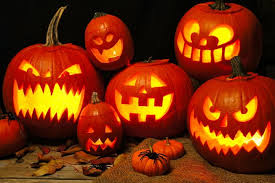
PUMPKINS
I had originally started to write about Bats in New Jersey this month, but there is so too much information about these incredible and misunderstood creatures to write about in just one article. Therefore, I have decided to wait until the winter months when I can focus two articles about NJ Bats in a row.
This article about Pumpkins was originally written in 2017.
Pumpkins are native to North America where seeds have been found in Mexican graves and temples dating back five to seven thousand years ago. Up north, pumpkins were grown by Native Americas for hundreds of years before the first European settlers arrived here.
The America Indians created a farming technique called “The three sisters”. Corn was grown in the same plot as beans and squash. The corn would grow tall, and the beans would use it as a trellis. The pumpkins and squash were planted at the base and would discourage raccoons and other critters from eating the corn and beans. The Natives later taught this practice to the Pilgrims. Without pumpkins it is doubtful any of the Pilgrims would have survived the first long winter.
In later years, the Pilgrims would carve out pumpkins, fill them with milk and bake them until they turned into a rich, flavorful custard. This tradition later became today’s pumpkin pies. Sugar pumpkins are the smaller orange pumpkins used to make pumpkin pie.
Pumpkins and other winter squash are easy to grow if you give them their basic requirements, warm rich soil, heavy but even moisture, lots of sun and most importantly, plenty of space to spread out and grow. If they outgrow their space, you can turn the growing tips towards where you want them to grow. When harvesting leave at least one inch of stem attached and let your pumpkins sit in the sun for ten days to cure them before storing them.
Our modern Halloween tradition of carving out pumpkins began in ancient Ireland. The Celtic people believed the dead arose from their graves every year on October 31. To ward off evil, people carved faces into rutabaga or turnips, beets or potatoes and put them in windows and at their doors. Even the name Jack-O-Lantern is derived from Irish lore and folktales.
When our Irish immigrants arrived in America, they brought these traditions with them and quickly learned pumpkins are much easier to carve out.
Today pumpkins can be found in a variety of sizes, from the massive orange pumpkins to jack-be-little, which can fit in the palm of your hand. Color choices now start at white, then orange, and blended. There are even pumpkins with warts for folks looking for something different.
Selecting a pumpkin is often a family event with everyone going to a local farm to make their selections. When choosing your pumpkin pay attention to the stem. Pumpkins with stems last longer; long or curved stems add character to the pumpkin.
A pumpkin placed by a door or in front of a house today has come to symbolize the fall season, good fortune and prosperity.
Happy Autumn,
James
